All living organisms are made up of basic building blocks that form the fundamental unit of life called cells. Be it plants, animals, or microorganisms; these simple biological units define all their structural and functional abilities. An in-depth analysis of the discovery of cells, who discovered cells and how, their types, components, functions, and much more is given in the 5th Chapter- The Fundamental Unit of Life in the CBSE class 9 syllabus of science. To make your learning experience wonderful, here are our fundamental unit of life class 9 notes.
This Blog Includes:
- Who Discovered Cell and How?
- Cells as a Structural and Functional Unit of Life
- Types of Cells
- Structure of a Cell
- Cell Organelle
- Difference between Plant and Animal cells
- Osmosis and Diffusion
- Isotonic, Hypotonic, and Hypertonic Solutions
- Important Questions and Answers
- The Fundamental Unit Of Life Class 9: Practice Questions
- The Fundamental Unit Of Life Class 9: PPT
- The Fundamental Unit Of Life Class 9 Notes PDF
- The Fundamental Unit Of Life Class 9: NCERT PDF
Who Discovered Cell and How?
Cells were discovered in 1665 by an English scientist named Robert Hooke while observing a thin slice of cork through a microscope lens. During his examination, he noticed that the cork was made up of several tiny “pores” or “cells” hence, the name.
Types of organisms based on the number of cells
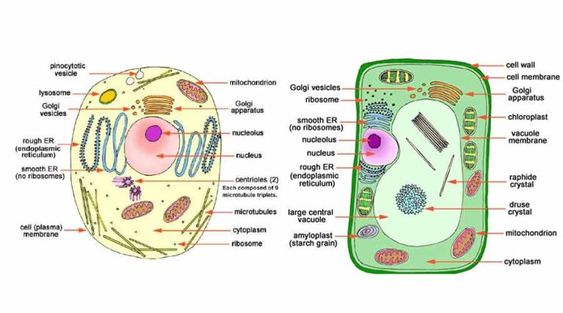
Cells as a Structural and Functional Unit of Life
Cells form the basic structure of an organism and a collection of similar cells that perform an organized function from a Tissue. Each tissue serves a particular purpose and can be combined with other tissues to form organs. These carry out essential life processes like metabolism, growth, reproduction, etc. in unicellular and multicellular organisms. Here are some examples of tissues and organs in plants and animals:
| Category | Tissues | Organs |
| Plants | Phloem, Xylem, Protective, etc. | Leaves, Roots, Stems, etc |
| Animals | Connective, Muscular, Nervous, etc | Heart, Liver, Kidney, etc |
Also Read: Class 9 Probability
Types of Cells
Regardless of the complexity as well as the type of organism, cells are mainly divided into two categories. Mentioned below is a distinction between the 2 major types of cells in our fundamental unit of life class 9 notes:
Prokaryotic Cells
Cells in which a true nucleus is absent are called Prokaryotic Cells. Since they do not contain any membrane-bound organelle, these are always unicellular organisms, such as Bacteria, Blue-Green Algae, Amoeba, etc.
Eukaryotic Cells
Cells that have a true nucleus are called Eukaryotic Cells. These are complete cells that contain a nucleus, mitochondria, and another membrane-bound organelle. These are always multicellular organisms like animals, plants, fungi, etc.

Difference between Prokaryotic and Eukaryotic cells:
| Prokaryotic cells | Eukaryotic cells |
| The nucleus and nucleolus are absent | The nucleus and nucleolus are present |
| Membrane-bound organelles can be seen | Membrane-bound organelles can be seen |
| Contain a single chromosome | Contain multiple chromosomes |
| Budding or fission cell division | Mitotic or meiotic cell division |
Structure of a Cell
Whether prokaryotic or eukaryotic, the cells have a similar structure up to some extent. A variety of key features of the cell are the same. A cell is essentially made up of 4 main components:
- Cell Wall and Cell Membrane
- Nucleus
- Cytoplasm
- Cell Organelle
Cell Membrane and Plasma Membrane
It is a biological membrane that separates a cell’s contents from its outside surrounding or external environment.

Properties
- Thin-walled, elastic, and semi-permeable
- Made up of proteins and lipids
- It is a living component of the cell
Functions
- Protects the contents of the cell from its external environment
- Its semi-permeable allows only selective materials to flow in and out of the cell
Cell wall
The next important topic in our fundamental unit of life class 9 notes is the Cell Wall. It is a structural layer just outside the plasma membrane.

Properties
- Flexible, tough, or rigid in some cells
- Non-living and freely permeable
- Made up of cellulose
Functions
- Protects the cell membrane
- It is majorly responsible for maintaining the shape and size of the cell
- Prevents the cell from becoming flaccid and from drying out.
Must Read: Class 9: Work, Energy and Power Notes
Nucleus
Nucleus refers to an organelle that is found in eukaryotic cells and contains the genetic material of a cell.
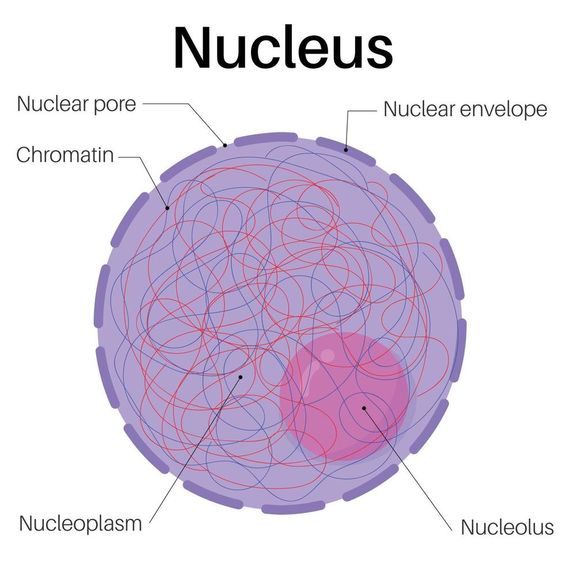
Properties
- It is spherical in shape and is enclosed in a nuclear membrane (also known as the nuclear envelope)
- Contains a type of protoplasm called nucleoplasm in which the nucleus is suspended
- The nucleus contains chromosomes that are made up of proteins and specific molecules of deoxyribonucleic acid or DNA. Chromosomes are, therefore, the carriers of an organism’s genetic information.
Functions
- Regulates the cell cycle and is responsible for cell division, protein synthesis, growth, etc.
- Controls the metabolic activity of cellular components
- Controls the genetic characteristics of an organism
- Stores hereditary materials in the form of DNA
What are the different Career in Science Stream?
Cytoplasm
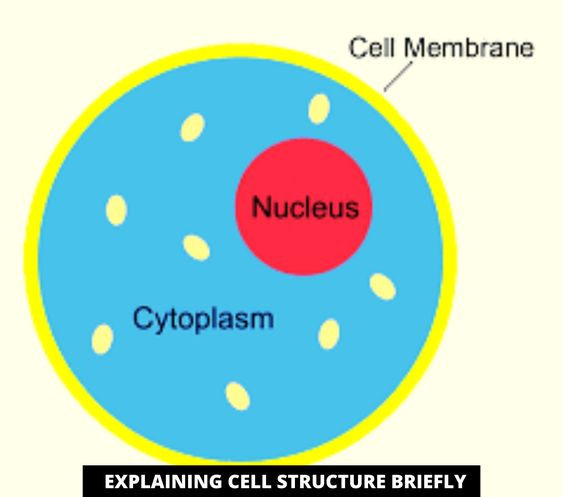
It is a thick, jelly-like substance that is enclosed by the cell membrane and contains all the cell organelles except the nucleus.
Property
- The cytoplasm is mainly made up of salts, proteins, and water. This aqueous liquid is called Cytosol.
Function
- It facilitates protein synthesis and other metabolic reactions.
Cell Organelle
Now that you are through with the aforementioned components of the cell, let us now study the last one in detail in our fundamental unit of life class 9 notes. The cell organelles play a very important role in the functioning of the human body. Have a look at their explanations-
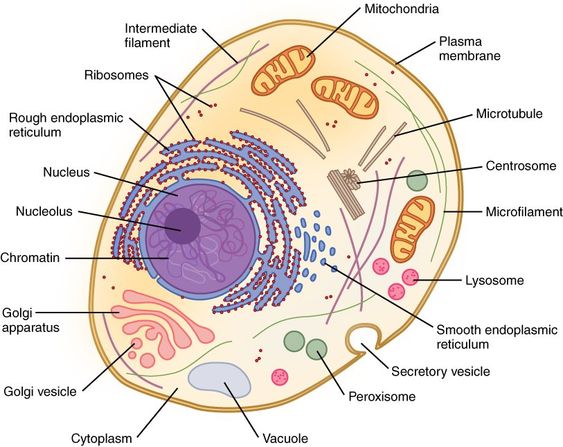
Golgi Apparatus
Also known as the Golgi body, it is a complex of folded membranes and vesicles found in the cytoplasm of eukaryotic cells. Its function is to modify, sort, and dispatch proteins for synthesis. It also facilitates the formation of lysosomes and the transport of lipids around the cells.
Mitochondria
They are rod-shaped membrane-bound organelles that are responsible for creating the chemical energy to power the biochemical reactions in the cells of most eukaryotic organisms. Since they are the site of cellular respiration and storage centres of ATP (the energy currency of cells), they are often known as the “Powerhouse” of cells.
Ribosomes
The small particles contain chemical messengers called RNA (ribonucleic acid) play a major role in protein synthesis.
Endoplasmic Reticulum (ER)
A network of membranous tubes (flattened sacs in the cytoplasm) that extend from the nucleus membrane to the plasma membrane of eukaryotic cells. Endoplasmic Reticulum gives internal support to the cell, enables the synthesis of proteins, and lipids, and detoxifies any drugs or toxins.
Plastids
Membrane-bound organelles are mostly found in plants and are responsible for the plant’s metabolic activities. There are 3 types of plastids that are explained in our fundamental unit of life class 9 notes:
Chloroplasts: Green plastids that contain chlorophyll and help in the production of food through the process of photosynthesis are called chloroplasts.
Chromoplast: Coloured plastids that usually contain yellow and orange colour are referred to as chromoplasts.
Leucoplasts: The colourless plastids which often store starch or oil are known as Leucoplasts.
Vacuoles
Membrane-bound organelles contain liquids or solids. These are permanent and large in plant cells (cover almost 90% of cell space in mature plants). Their main function is to ensure the rigidity of the cell and maintain its osmotic pressure.
Lysosomes
Found mostly in eukaryotic cells of animals, these spherical sac-like structures contain digestive enzymes. They are responsible for breaking down worn-out parts of the cell and destroying any foreign bacteria or viruses. This is why they’re also known as “Suicide Bags”.
Centrosomes and Centrioles
Found only in eukaryotic cells of animals, centrosomes are unbounded organelles that contain centrioles. These are cylindrical microtubes that help in the process of cell division.
Also Read: Natural Vegetation and Wildlife Class 9
Difference between Plant and Animal cells
Another important distinction in our fundamental unit of life class 9 notes is between the plant cell and the animal cell. Refer to the table mentioned below to understand it better-
| Plant Cells | Animal Cells |
| A rigid cell wall encapsulates the plasma membrane | No cell wall present |
| Larger than animal cells | Much smaller than plant cells |
| Contain plastids | Do not contain plastids (except protozoan Euglena) |
| Vacuoles are large and permanent | Vacuoles are small and temporary |
| Do not contain centrosomes and centrioles | Do contain centrosomes and centrioles |
Osmosis and Diffusion
The flow of water through a semi-permeable membrane is referred to as osmosis. Because the membrane does not allow all molecules to pass through it, osmosis is a selective process. Typically, water is the sole free-flowing molecule across this barrier. For instance, take two flasks and fill one with a mild sugar solution and the other with a highly concentrated sugar solution. A semipermeable membrane separates the two beakers. The water will then flow from the side of the beaker where it is more to the side where it is less. Because it is semi-permeable, or selectively permeable, the membrane enables only water to travel through it and not sugar.

Diffusion, on the other hand, is the transfer of any material from one concentration to another. Diffusion occurs in solids, liquids, and gases, with gases diffusing at a higher pace. This is due to the fact that gas particles are energetic due to their high kinetic energy. Diffusion is the flow of gases into and out of the cell. For example, have you ever noticed the aroma of your favourite dish at home when it is unexpectedly prepared for you by your mother? This is related to the dispersion of the process. When food is prepared in the kitchen, the aromatic molecules from the kitchen begin to move out into the kitchen’s surroundings and, over time, get distributed in the air.

Isotonic, Hypotonic, and Hypertonic Solutions
- Isotonic solutions are those that have the same concentration of solutes and pH as the surrounding bodily fluid or cytoplasm.
- Hypotonic solutions are those solutions that have a lower solute concentration than the surrounding fluid and can cause the cell to rupture due to an excess of water entering the cell.
- Hypertonic solutions are those solutions that have a greater solute concentration than the surrounding fluid and so force water out of the cell, shrinking it.
Important Questions and Answers
Under the microscope, Robert Hooke observed cells in thin slices of cork in 1665. He noticed that cork mimics the structure of a honeycomb, which is made up of numerous compartments known as cells.
Because cells are organized in a systematic manner to produce a live entity, we may say that a cell acts as a building block for organisms. Cells are also known as functional units since all of life’s metabolic processes take place at the cell level.
Diffusion allows substances such as carbon dioxide to enter and exit the cell. Substances migrate spontaneously from higher concentrations to lower concentrations. When this movement involves the usage of a semipermeable membrane, it is referred to as osmosis.
Amoeba receives nourishment through pseudopodia. The amoeba plasma membrane is flexible, allowing the cell to swallow food and create a cup-shaped structure known as pseudopodia through the process of endocytosis.
Mitochondria are called so because in it oxidation of food occurs and it produces energy in the form of ATP.
Protein synthesis occurs in ribosomes.
The Fundamental Unit Of Life Class 9: Practice Questions
- Differentiate between a eukaryotic cell and a prokaryotic cell.
- Enlist the structures of a cell with a help of a well-labelled diagram.
- Differentiate between plant and animal cells.
- Differentiate between osmosis and diffusion with examples.
- What would be the outcome in a scenario where a rupture occurs in the plasma membrane?
- Growth and repair require which type of cell division?
- If the organization of the cell is destroyed due to some physical or chemical influence, what would happen?
- Why are lysosomes called suicidal bags?
- What would happen if cells don’t have Golgi bodies?
- What are the functions of the endoplasmic reticulum?
The Fundamental Unit Of Life Class 9: PPT
The Fundamental Unit Of Life Class 9 Notes PDF
The Fundamental Unit Of Life Class 9: NCERT PDF
Download the NCERT PDF for chapter 5 on The Fundamental Unit of Life class 9 from Here!
Hopefully, through this fundamental unit of life class 9 notes, you are well versed in this chapter of biology. Consult Leverage Edu experts for career counselling and have a better understanding of which career path to choose.
-
AMAZING
-
Thanks!
-
-
Nice I Understood the lesson perfectly
-
Thanks for reading Gowthami Kiran!
You can also check: CBSE Class 9 Notes: Why Do We Fall Ill?
Diversity in Living Organisms Class 9 Notes
Natural Resources Class 9 Notes
-

 One app for all your study abroad needs
One app for all your study abroad needs


















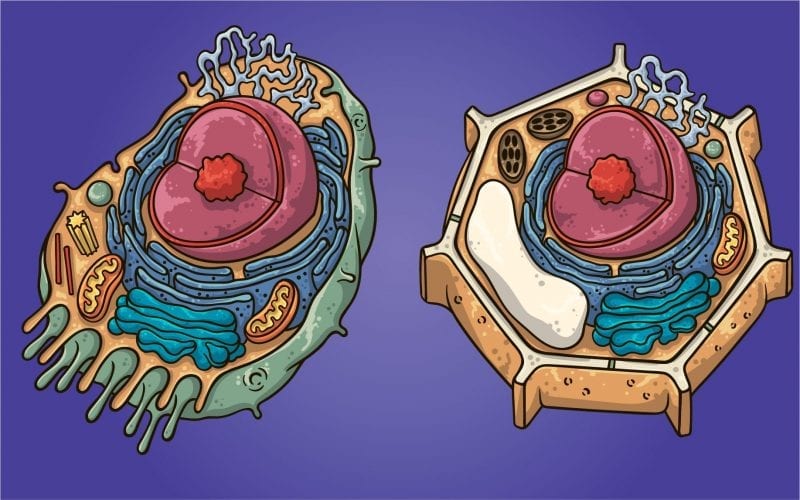



 45,000+ students realised their study abroad dream with us. Take the first step today.
45,000+ students realised their study abroad dream with us. Take the first step today.


15 comments
AMAZING
Thanks!
Nice I Understood the lesson perfectly
Thanks for reading Gowthami Kiran!
You can also check: CBSE Class 9 Notes: Why Do We Fall Ill?
Diversity in Living Organisms Class 9 Notes
Natural Resources Class 9 Notes
Thanks a lot guys for providing these notes. I found them very much useful. It was like reading my book in short.
Thanks for reading, Arjun!
You can also read: Structure Of An Atom – Class 9 Science Notes
Class 9 Food Security in India
Class 9 Social Science- What is Democracy?
Thanks for reading, Arjun!
You can also read: Structure Of An Atom – Class 9 Science Notes
Class 9 Food Security in India
Class 9 Social Science- What is Democracy?
Class 9 Science: Sound
This Is Awesome website for Fundamental Unit Of Life Chapter notes. I Can Surely say That There is no other website on this chapter rather than leverageedu.
We are glad you liked it!
You can also read: Structure Of An Atom – Class 9 Science Notes
CBSE Class 9 Notes: Why Do We Fall Ill?
Working of Institutions Class 9 Notes
Wonderful and osum notes in my exam I have score while reading this notes
Hi Udit,
We are glad and delighted to know that you have found our study notes helpful and useful. We would like to wish you all the best for your upcoming exams. Check out out NCERT Class 9 Science Solution guide here to excel in you exams: https://leverageedu.com/blog/ncert-class-9-science-solutions/.
Hi Udit,
We are glad and delighted to know that you have found our study notes helpful and useful. We would like to wish you all the best for your upcoming exams. Check out out NCERT Class 9 Science Solution guide here to excel in your exams: https://leverageedu.com/blog/ncert-class-9-science-solutions/.
Best explain in your link
Hi, Divyam! Thanks for liking our blog!
Here we are referring you to some other blogs to read: The Fundamental Unit Of Life Class 9 Notes
Working of Institutions Class 9 Notes
The Story of Village Palampur Class 9 Notes
Hi, Divyam! Thanks for liking our blog!
Here we are referring you to some other blogs to read: The Fundamental Unit Of Life Class 9 Notes
Working of Institutions Class 9 Notes
The Story of Village Palampur Class 9 Notes
Tissues Class 9 Notes